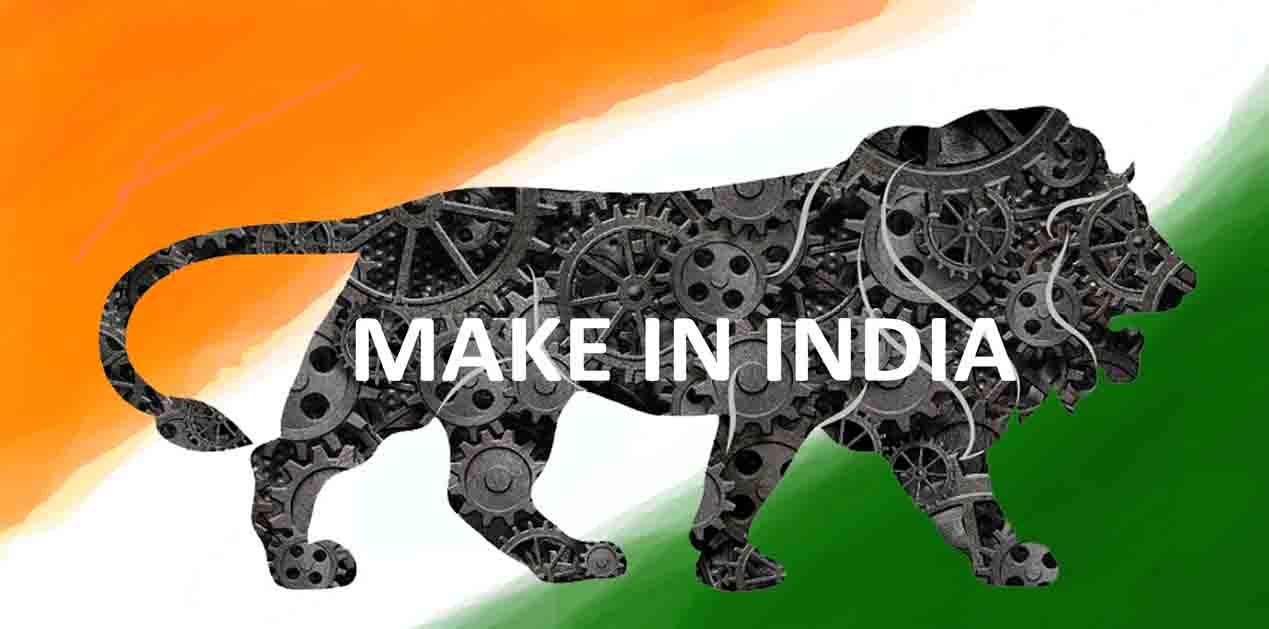The Finance Minister, in his budget speech 2018 announced that two Defence Industrial Production Corridors (DIPC) will be developed in the country. Following this, the Govt., in early this month, announced that the first of this corridor will come up between Chennai and Bangalore which will pass through Coimbatore and several other industrial clusters.
The Prime Minister (PM) on 21 Feb 18 announced at the UP Investors' Summit that the second DIPC will come up in the Bundelkhand region. He said, that the Govt. has decided to extend this corridor to Agra, Allahabad, Lucknow, Kanpur, Jhansi and Chitrakoot. The PM said that the DIPC is likely to bring an investment of 20,000 cr and generate employment avenues for 2.5 lakh people. The Defence Minister, speaking on the occasion, stated that the corridor will provide an impetus to the defence production industry in the country1.
Statements and claims aside, the basic purpose of such national level initiatives like the DIPC is basically to strengthen the “Make in India” initiative. An initiative which was launched by the PM in Feb 2015 and which was given a definite shape by way of rules, regulations and policy framework with the launch of Defence Procurement Procedure (DPP), 2016, during the 9th Edition of Defexpo India, at Goa in Mar 16.
The soul of "Make in India" as enunciated in DPP 2016 is to strengthen the indigenous defence manufacturing capability of the country with a special attention to the growth of the private industry including the Micro Small and Medium Enterprises (MSMEs). It was envisaged that as our industry progressively gains strength, expertise and momentum, it will enter into more and more arrangements built around joint ventures, co-development, co-production and above all, Transfer of Technology with foreign Original Equipment Manufacturers (OEMs), thus making a success of "Make in India".
In consonance with the above thought, the preamble of DPP 2016 states that the cornerstone of all defence procurements is to achieve self-reliance in design, development and manufacturing in the defence sector, so as to realise the dream of "Make in India" as the focal point of defence acquisition policy/procedure. Towards realising this dream, DPP 2016 introduced many new provisions and 'enabling tools'. Some of these include the most preferred category of Indian Design Development and Manufacture (IDDM), expanding the base of user options in Services Qualitative Requirements (SQRs) by way of Enhanced Performance Parameters (EPPs), raising the applicability of offset threshold, enhancing the role of MSMEs and more. As time passed, more enabling provisions got added, like simplification of the ‘Make Procedure’ and introduction of the Strategic Partnership model.
Getting back to DIPC, for it to actually realise its meaning and potential, a tremendous range and depth of work, extending over decades is required to be executed between the ‘announcement’ and its 'realisation'. This essentially involves setting up a huge infrastructure base comprising of a host of industries, both indigenous and foreign, ensuring their tie ups in complimentary arrangements of Joint Ventures, Co-Development and Co-production. That would provide suitable platforms where transfer of technology can take place effectively in ‘know why’ terms with buy back and exports, thus ensuring adequate logistics support, surplus power grids, multi-medium connectivity, and adequate sustenance infrastructure et al. In that context, while it may be relevant to ask whether DIPC will become a reality in the manner they should, it is of far greater importance to ask whether the ultimate aim of DIPC - i.e the realisation of the "Make in India" dream - will happen or not? Given the state of things that exist today, the answer to the second question is that there are many hurdles to cross in the way of "Make in India".
With nearly 60 percent of all its defence needs dependent on imports, with nearly 13 percent share of the world arms imports and spending a whopping $ 55923 million for the same India, as per 2016 data, still leads the world as a top arms importer. Meanwhile, its arms exports to the rest of the world have actually declined by 1.2 percent in 2016 as compared to the previous year.2 For "Make in India" to take roots , the above import percentages must come down while the export ones must go up. This can only happen when defence manufacturing base spreads and more and more orders flow to greater number of potential manufacturers who can cumulatively push up volumes, as well as, numbers.
It is not that the Indian private defence industry is incapable of executing orders, but the unfortunate fact is, that while there is an over-concentration of orders with the public sector (leading to choking and queuing), hardly any orders are actually flowing to the private players. To sample:-
• The order book of Bharat Electronics Ltd (BEL) stood at 33,806 cr as on 01 Jan 173 (currently it is over 40,000 cr with 13,000 cr expected more in this FY itself)4. The order includes all the major equipment like radio relay frequency, hand held thermal imager, laser range finder, fire control system, Akash Weapon System, 3D Tactical Control Radar (TCR), L70 gun upgrade, ship based signal intelligence system and more.
• In the financial year 2015-16, Defence Research Development Organisation (DRDO) was sanctioned 78 new Projects worth 3723 cr though it could complete only 42 projects at a cost of 1353 cr5. It currently has 291 projects amounting to Rs 49,030 cr, which amounts to a whopping 70 percent share of all procurement projects.
• Bharat Dynamics Ltd (BDL), which is emerging as the world's largest missile house (orders wise) had an order book of Rs 11,100 cr (111.64 billion rupees) as on 31 Oct 176. Similarly, Hindustan Aeronautics Ltd (HAL) received orders worth 21,000 cr in financial year 2016-17, bagging almost everything - 12 Do-228 helicopters, 32 Advance Light Helicopters (ALH), AL 31 FP engines, Su-30 MKI and more.7
All the above figures are likely to go up significantly as the Defence Public Sector Undertaking (DPSU) duo of BEL and BDL along with DRDO are to embark on manufacturing a series of air defence and anti-tank missiles (Short Range Surface to Air Missiles or SRSAM, Quick Reaction Surface to Air Missiles or QRSAMs, Anti-Tank Guided Missiles or ATGMs) in the foreseeable future.
While the public sector is flush with orders, (some with and many without competition as they claim the projects to be in their core sector of invested capital and capability), not many orders are flowing into the private sector. To sample the data again: -
• As per a report of Sep 2017, the private defence industry as a whole has less than 5 percent (approx 5000 cr) share of direct orders from the Defence Ministry8.
• Most of the above are in the order books of big players ( Larsen and Toubro, Tata, Mahindra and Mahindra, Reliance, Adani and more). The MSMEs as a group, are largely struggling without orders.
• The much hyped ‘Make in India’ Projects, namely, the Futuristic Infantry Combat Vehicle (FICV), Tactical Communication System (TCS), and Battle Management System (BMS) have not even reached the development stage even after four years, leave aside the approval stage which itself is years away. Even after approval, a long process of selection of the prototype manufacturer, actual production and placement of orders is to follow (8-10 years for that).
• Even in the Strategic Partnership Model (SPM), there is not much progress or forward movement in any of the four Projects, namely, P-75 (I) submarine, Naval Multi Role Helicopter (NMRH), Naval Utility Helicopters, Future Ready Combat Vehicles and Single Engine Fighter Aircraft.
• Though the SPM is based on the laudable aim of allowing local private sector companies to form manufacturing joint ventures with foreign OEMs, there is lack of clarity on many issues. Even the definition of ‘strategic partner’ itself has gone through so many rounds of amendments that it has lost its objectivity and focus leading to several different interpretations and connotations. The OEMs need clarity and assurance on a large number of issues, most importantly, on transfer of technology. In that sense, the SPM has not yet acquired the type of traction and momentum that is required to make steady progress .
• While, the recent simplification of Make II procedure by the Ministry of Defence (MoD) is a step in the right direction, it’s execution needs to be ensured by carefully working out the modalities of implementing each and every point in the "relaxed criteria", and providing clarification on issues like suo moto proposals , foreclosing of projects etc.
• Even in the Public-Private Partnership (PPP) model, while good beginnings have been made in the context of Akash Weapon System, Pinaka, 3D TCR and more, there is scope of increasing the overall quantum of PPP Projects on a year-on-year basis.
In order to remove the current dysfunctional status of ‘Make In India’, some points for consideration are as follows:-
• There is an urgent need to address the current totally skewed balance when more than 95 percent of all the orders related to defence procurement are assigned to DPSUs and DRDO, while the share of private industry is less than 5 percent. Not only it keeps the private industry always starving for more, but it also keeps the defence forces in perpetual wait because the public sector companies, with their order books much larger than their finite capability, keep queuing up the orders, and end up in invariable time and cost overruns. Many examples can be sited.
• The current four projects in the ‘Make’ category must be pushed forward as a matter of operational expediency.
• It is for the MoD to come clear on all the lurking doubts in the SPM. Given its tardy progress, some of the Subject Matter Experts have come to believe that the Govt. itself is not keen enough to take this initiative forward.
• Clear instructions need to be taken out by MoD clarifying as to how each provision of the "relaxed criteria" in Make II procedure will be implemented.
• In essence, there is an urgent need ensure that ‘Make in India’ moves from sloganeering to implementation. Only then the national level initiates such as the DIPC etc. will ever achieve their ultimate aim in times to come.
In fact, a number of private industry leaders keen on participation in the Make in India Programme, recently met the Defence Minister Mrs. Nirmala Sitharaman. Issues of balancing public and private sector, procurement process, defence industry, the MSME sector, commercialisation of the DRDO developments, and issues related to licencing and tax matters were discussed. It is hoped that the issues would be resolved in due course.
End Notes:
1. https://m.timesofindia.com> articlesshow> PM Modi announces 20KCrore defence Corridor for Bundelkhand . Accessed on 21 Feb 18.
2. https//www.livemint.com> politics> policy> india continues to be largest importer of arms. Accessed on 23 Feb 18.
3. https://www.businessline.com> BEL order book. Accessed on 23 Feb 18.
4. https://m.economicstimes.com> current order book bel. Accessed on 23 Feb 18.
5. Col Arun Kumar, “Defence Procurement: Way Forward” Defence ProAc Biz News VOL VI Issue 1 Jan-Feb 18.
6. https://www.indiainfoline.com> article> bharat dynamics files draft prospectus for public issue. Accessed on 23 Feb 18.
7. v ibid.
8. https://www,live mint.com> article > inside Indian industry. Accessed on 23 Feb 18.
(Views expressed are of the author and do not necessarily reflect the views of the VIF)
Image Source: https://blog.ipleaders.in/need-know-make-india/








.jpg)

Post new comment